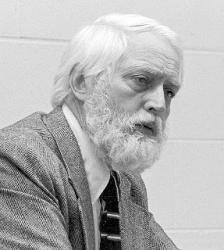Scripture References:
st. 1 = Rom. 8:30
st. 3 = Col. 1:9
Dutch pastor Hendrik Pierson (b. Amsterdam, the Netherlands, 1834; d. Groningen, the Netherlands, 1923) wrote the original text “God is getrouw, zijn plannen falen niet”, and published it in Vluchtheuvel Gezangen (1904), which he compiled for the Vluchtheuvel Church in Zetten. It was also published in the Psalmen en Gezangen (1938) of the Dutch Hervormde Kerk and then brought to North America by Dutch-Canadian immigrants after World War II. Stanley M. Wiersma's (PHH 25) translation was first published in the Psalter Hymnal Supplement in 1974.
The three stanzas display a Trinitarian pattern: stanza 1 is about God's providence; stanza 2, Christ's victorious rule; stanza 3, the Spirit's leading of the church. Together the stanzas portray a powerful vision of God's providence as a doctrine that brings comfort to Christians.
Pierson not only served as a pastor in Heinenoord and Hertogenbosch, he was also director of the Heldring Institute in Zetten, which operated halfway houses and schools for girls and young women. He was a leader in various social movements in the Netherlands, especially militating against legalized prostitution. In his life and work he maintained a fine balance between theology, worship, and the diaconal work of the church. Pierson wrote a number of hymns.
Liturgical Use:
Worship that focuses on God's providence or the Trinity; ordination/commissioning services; church dedications and anniversaries; new ventures in church ministries.
--Psalter Hymnal Handbook


 My Starred Hymns
My Starred Hymns




